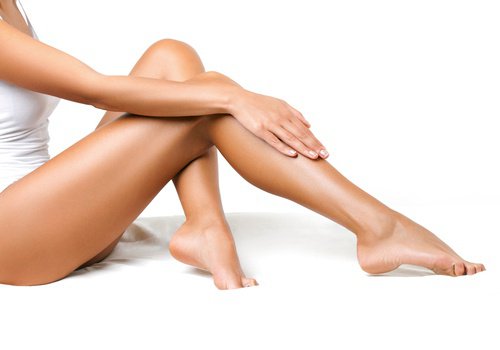7 Ways to Increase Blood Flow to Your Feet in 20 Days


Written and verified by psychologist Valeria Sabater
Whether you’ve been diagnosed with a vascular disease or not, if you want to improve your well-being on a daily basis, it’s good to know some simple ways to improve the circulation to your legs. Contrary to what you might think, these techniques are really easy to do, and won’t get in the way of your everyday life.
Increasing blood flow to your legs and improving your venous return is important, helping to prevent varicose veins or, if you already have them, stop them getting worse.
7 changes that improve blood flow to your legs
1. Apply aloe vera gel
Aloe vera gel is a substance which, when applied topically, helps to hydrate the skin. Given how important this is for helping us relax and get a better night’s sleep, using aloe vera is highly recommended.
According to an investigation carried out by the Tshwane University of Technology in South Africa, it is also a powerful anti-inflammatory and can help to boost your circulation.
To make the very most of all its natural properties, you can apply this gel using a invigorating leg massage. You don’t need to apply too much pressure; instead use continuous, rapid movements.
What do you need to do?
- Take an aloe vera leaf, peel it, and leave it in the refrigerator for 2 hours. Alternatively, you could simply buy some gel from the store.
- After showering, find somewhere comfortable to sit.
- Take some aloe vera gel, and start rubbing it onto your legs. Work upwards, starting from your ankles and moving toward your knees.
2. Hawthorn tea
By drinking this infusion 2 – 3 times a week, you can benefit from its natural compounds, including triterpenoid acids, flavonoids, polyphenols, tannins and pectins. These give hawthorn its purifying and diuretic properties, which can help prevent water retention and, in turn, improve poor circulation, as shown in this study by the San Pablo CEU University in Madrid.
We must warn you that you should never drink more than 1 gram of this plant per day, ideally in tea form. In addition, if you’re taking any medication, it’s best to talk to your doctor about taking this remedy before trying it. This is especially important if you’re receiving treatment for a heart condition.

3. Regular exercise at home and at work
As everybody knows, regular physical activity is essential for improving circulation, as confirmed in this study carried out by the Santa Catarina State University in Brazil. However, what many people fail to take into account is that exercise isn’t something that should be limited to one particular time of day.
What your body needs is aerobic movement. This is an activity that encourages the oxygenation of your blood and a regular heartbeat. Because of this, you should make the most of any time you get to improve your aerobic fitness, and try out the following tips:
- Always choose stairs over the elevator.
- Every half hour, you need to get up and walk.
- If possible, try to do as many errands as you can on foot instead of taking the car.
- Try to find time throughout the day to get out and walk quickly for at least 20 minutes.
- If you’re seated for hours at a time, get a mobile foot rest you can do a little exercises with.
4. Eat foods that are rich in potassium
This study by the University of Naples, Italy, shows that eating foods that are rich in potassium reduces your risk of a stroke by 21%. Similarly, it suggests that potassium can help to reduce blood pressure, and lower the risk of cardiovascular disease. Here’s the list of some recommended foods you should include in your diet:
- Seaweed
- Broccoli
- Bananas
- Tomatoes
- Squash
- Avocados
- Radishes
- Carrots
- Pure coco powder
- Linseed, or sunflower, pumpkin, sesame, or chia seeds
Also Read: 7 Reasons Why You Should Eat Radishes
5. Sleep with your feet elevated
Another good way to improve your circulation is to start putting this simple trick into practice from now on: sleep with your feet slightly elevated above your head. This is supported by a study carried out by the Spanish Society of Community Pharmacy.
To do this, you don’t need to buy another bed or make any drastic changes: all you need to do is place a few pillows under your legs. This way, you can increase your venous return, and you’ll wake up with light, rested legs.

6. Orange and carrot juice for breakfast
As well as making sure you keep well-hydrated, drinking this natural juice with your breakfast can be a great help. Many foods contain properties and nutrients which are great for improving circulation, including orange (as suggested in this study by the Edith Cowan University in Australia) and carrot (as shown in this study carried out by the Texas A&M University Kingsville in the US). You also add a pinch of grated ginger to give it a burst of flavor.
7. Manual lymphatic drain with rosemary oil
You can perform this massage on yourself or ask a good physical therapist or massage therapist to do it for you. According to this study by the Paulista State University, Brazil, rosemary has anti-inflammatory properties, which can improve circulation to your lower extremities.
So, as you can see, these suggestions are really easy to follow. However, remember to always talk to your doctor first. This will allow them evaluate the underlying causes of poor blood flow to your legs.
Once you’ve see your doctor, these easy natural remedies will undoubtedly be a great help to you on a day-to-day basis. Put them into practice today and you’ll see start to see results within 20 days.
This text is provided for informational purposes only and does not replace consultation with a professional. If in doubt, consult your specialist.








